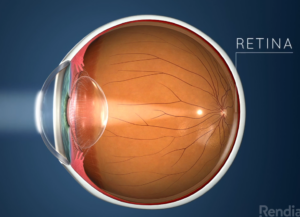Nearsightedness is a vision impairment that results in problems with or a lack of ability to make out objects or focal points that are not close to the eye. In other words, distant objects or focal points may seem hazy, or the patient might not be able to see them altogether. Someone could have extreme, moderate, or mild nearsightedness. Those who are nearsighted can usually see very well with near vision but have trouble seeing distant items, such as street signs while driving, presentation screens at the office or in the classroom, or even things on the floor.
If you have myopia, there are many solutions to deal with it and help refine your far vision. At his practice in Minneapolis, MN, world-renowned ophthalmologist Dr. Ralph Chu and his team make diagnoses of problems like nearsightedness and offer vision correction options to suit your lifestyle. Get in touch with Chu Vision Institute to schedule an eye exam if you’ve noticed a difference in your vision or are having trouble seeing objects from far away.
SYMPTOMS OF MYOPIA
Generally, the most noticeable sign of myopia is hazy vision when looking at objects from a distance. Many people can also suffer from other problems that stem from consistent squinting or eye strain. Also called eye fatigue or asthenopia, eye strain can cause aching or dry eyes. It might also lead to an intolerance to light and discomfort in the shoulders and neck. Sometimes, patients who already wear eyeglasses or contacts for nearsightedness develop these symptoms. They are a good indication that your lens prescription needs to be refreshed and that you should schedule an eye exam soon.
WHAT CAUSES NEARSIGHTEDNESS?
Studies have indicated that nearsightedness can be either hereditary or caused by environmental factors. The unclear vision that occurs with nearsightedness is the result of the shape of the eyeball in general or the cornea. When the eyeball is too long front to back, or when the cornea is too domed, the light entering the eye can’t be aimed correctly onto the retina. Most of the time, nearsightedness starts to develop in young students, especially in those who are genetically predisposed. However, older people can also develop myopia from environmental factors or other health issues. Some environmental factors that have been associated with myopia include straining to read or write for lengthy periods of time, not spending time outdoors, and especially, spending prolonged periods looking at mobile devices. Myopia can also be a symptom of spiking blood sugar levels in people who are diabetic.
DIAGNOSIS OF MYOPIA
Finding out if you have myopia is very simple and is almost always done with a basic vision acuity evaluation. Most patients have had this test at some point in their lives, and it simply involves reading letters of different sizes on an eye chart. Additional common tests that may be done utilize a phoropter (sometimes known as a refractor) and a retinoscope (a tiny light) to measure how your eyes refract light. Each of these assessments is short, easy, and completely noninvasive. Once your tests are done, Dr. Chu will go over your best treatment options.
HOW IS NEARSIGHTEDNESS TREATED?
Individuals who are diagnosed with myopia have many options available, depending on their prescription and lifestyle. Eyeglasses or contacts are often used to temporarily improve vision, and many patients use both options to accommodate their unique routines. At Chu Vision Institute, we are able to offer our patients many permanent vision correction options. Many people might consider LASIK, SMILE, or PRK laser vision correction for life-changing results. Dr. Chu is an expert is laser vision correction as well as surgical options like Refractive Lens Exchange. or the Implantable Contact Lens. Let Dr. Chu know if you want to learn more about permanent vision correction, and he will talk with you about whether you are a good candidate.
GET CLEAR VISION TODAY
Going through life with vision that’s not as perfect as it could be can often lead to other uncomfortable issues, such as migraines and eye strain. Nearsightedness is a highly common refractive error that may be completely treatable for nearly everyone who has it. Wearing prescription lenses or having laser surgery could phenomenally improve the day-to-day lives of patients in the Twin Cities.
Find your true north with New Vision.

